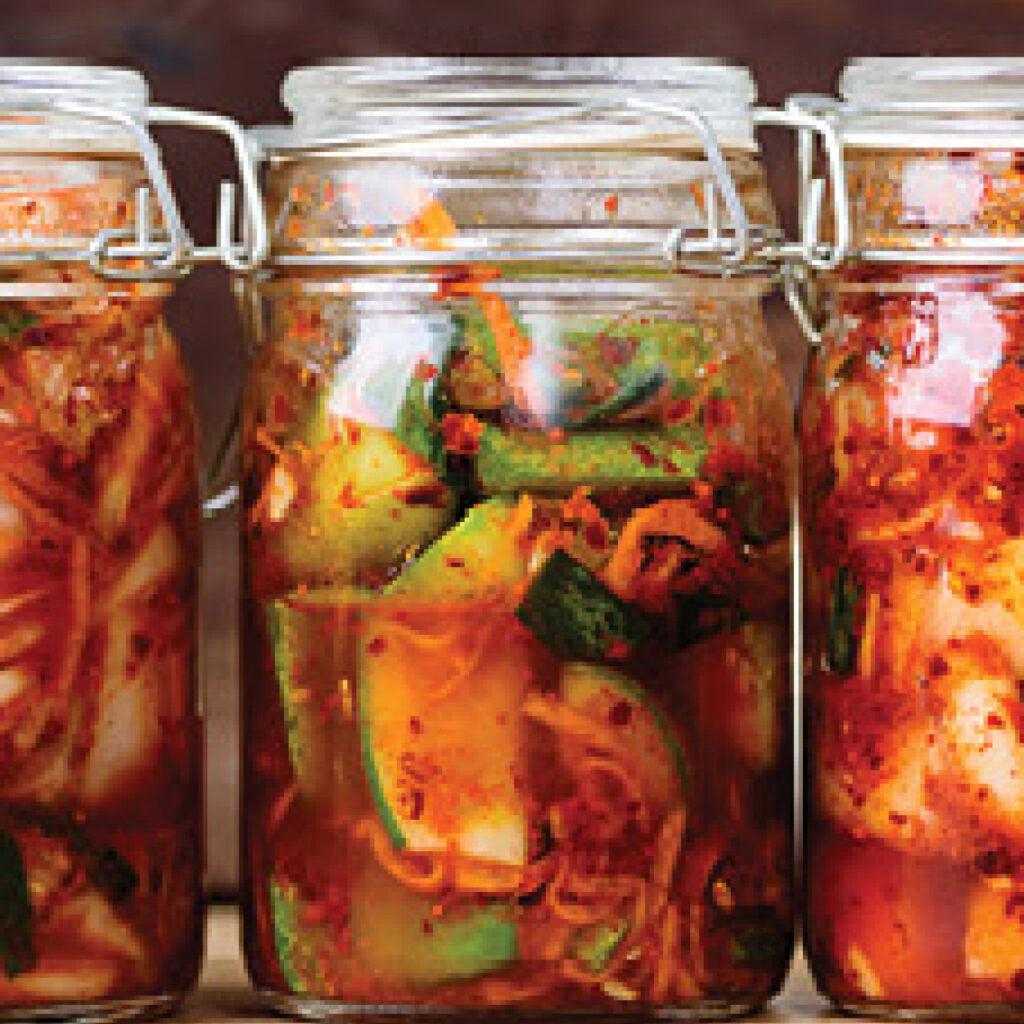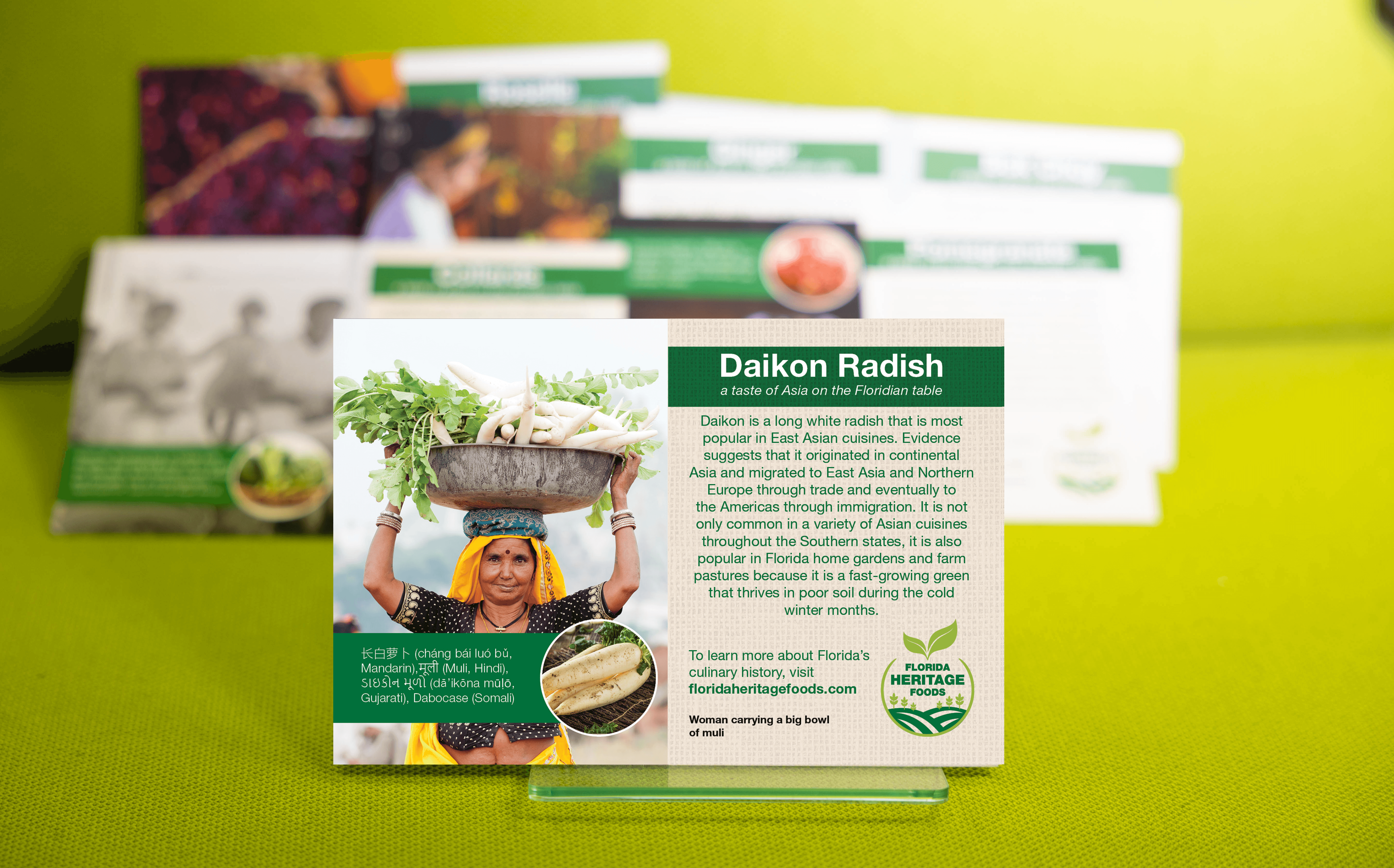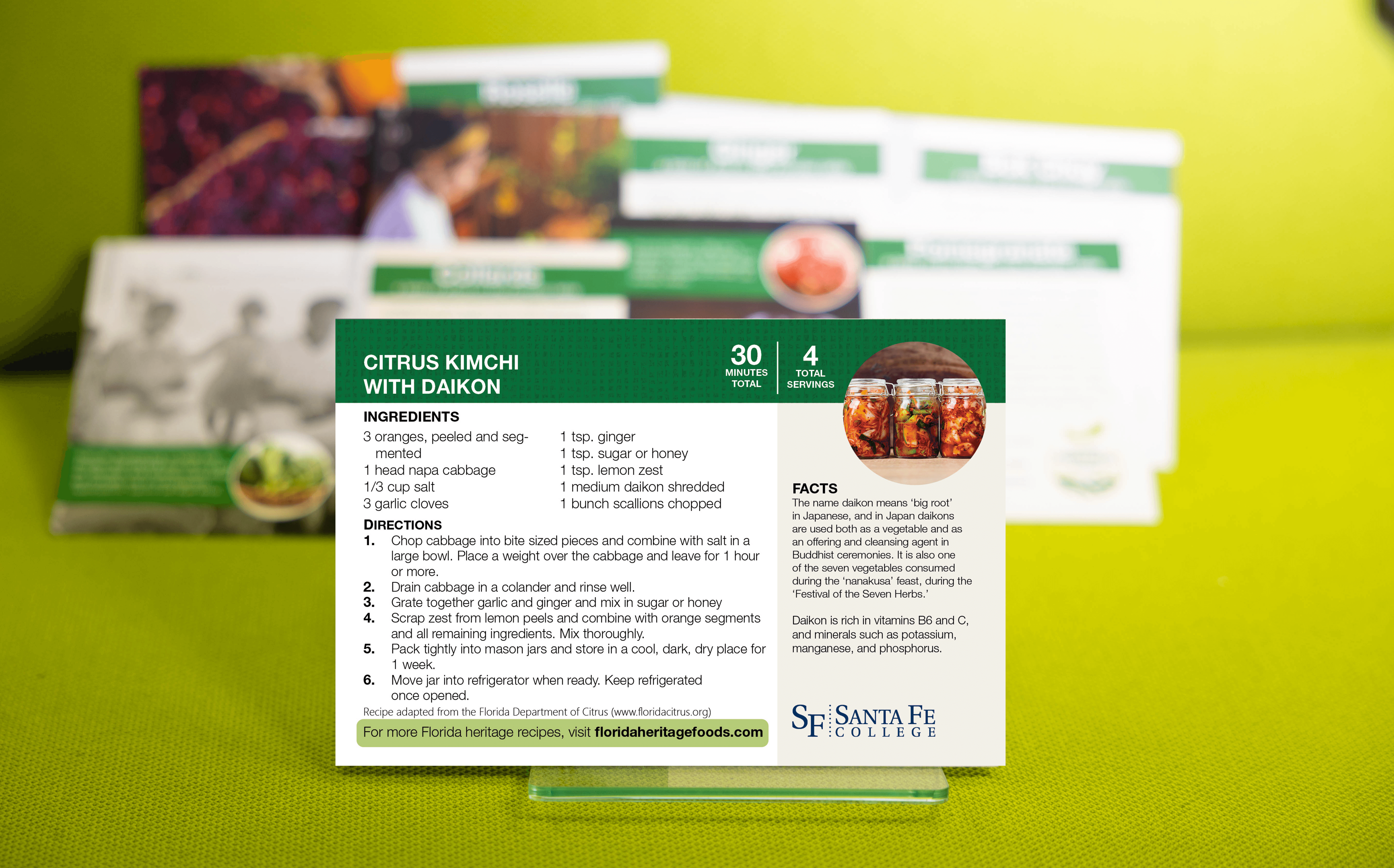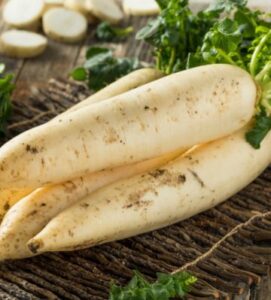Daikon Radish
Raphanus sativus longipinnatus

长白萝卜 (cháng bái luó bǔ, Mandarin),मूली (Muli, Hindi), ડાઇકોન મૂળો (dā’ikōna mūḷō, Gujarati), Dabocase (Somali)
Daikon is a long white radish that is most popular in East Asian cuisine. Evidence suggests that it originated in continental Asia and migrated to East Asia and Northern Europe through trade and eventually to the Americas through immigration. It is not only common in a variety of Asian cuisine throughout the Southern states, it is also popular in Florida home gardens and farm pastures because it is a fast-growing green that thrives in poor soil during the cold winter months.

Archaeological evidence suggests that daikon radish originated in the continental Asia and migrated to East Asia and northern regions of Europe through trade. The radish eventually spread to the Americas via Chinese workers immigrating to California during the Gold Rush period, and it gained popularity throughout the United States during mass immigration of people from Asia during the 20th century. In the Southern states, the radish received attention as a cold weather crop among farmers, and the United States Department of Agriculture began promoting daikon as a pasture forage for livestock during the winter months as well as a soil amendment and it was named ‘forage radish.’ Today, daikon is popular among Florida home gardeners because it thrives in poor soil during the winter months.
Daikon radish is abundant through Asian cuisine, particularly in East and Southern regions that include a variety of different types of daikon. The name daikon means “big root” in Japanese, and in Japan daikons are used both as a vegetable and as an offering and cleansing agent in Buddhist ceremonies. It is also one of the seven vegetables consumed during the ‘nanakusa’ feast, during the ‘Festival of the Seven Herbs.’ The root of the daikon is eaten raw in salads, pickled, steamed, sliced and cooked in sauces, or cubed and added to soups and stews. The greens are also added to salads, steamed, and stir-fried. In Korea, daikon is often fermented in kimchi, and in Vietnam pickled daikon is used as a ‘banh mi’ topping. In China, a wide variety of daikon radish come in different shapes, colors and flavors. Daikons are not only prevalent in Asian cuisine in the U.S. they are also oven-roasted with other root vegetables, spiral cut for a pasta substitute, baked or fried into a potato chip alternative, and the seeds are sprouted for ‘micro-greens’ and added to sandwiches and salads. Daikon has also received significant attention among Southern livestock farmers because the greens of the daikon grow fast in cold weather making it an ideal fodder for cows and goats during the winter season. It is also grown as a ‘fallow’ crop known as ‘green manure’ by leaving the roots in the ground in order to enrich the soil for the spring growing season.

Daikon is rich in vitamins B6 and C, and minerals such as potassium, manganese, and phosphorus.


Direct sow daikon seeds into prepared rows September through March, and harvest November through April. Chinese varieties tolerate higher temperatures than the Japanese ones. Let some roots remain in soil as an amendment and let flower to save seed pods for the next season. To plan a Florida heritage garden, download the ‘Planning a Florida Heritage Garden (PDF).’

Santa Fe College Partnered with Multiple Organizations in a Collaborative Effort to Bring Awareness of the Heritage Plants In Florida.
BY CULTURAL HISTORY
BY GROWING SEASON
DROUGHT TOLERANT PLANTS
Commitment to Equal Access and Equal Opportunity
Santa Fe College is committed to an environment that embraces diversity, respects the rights of all individuals, is open and accessible, and is free of harassment and discrimination. For more information, visit sfcollege.edu/eaeo or contact equity.officer@sfcollege.edu.
SACSCOC Accreditation Statement
Santa Fe College is accredited by the Southern Association of Colleges and Schools Commission on Colleges (SACSCOC). For more information, visit sfcollege.edu/sacscoc.
